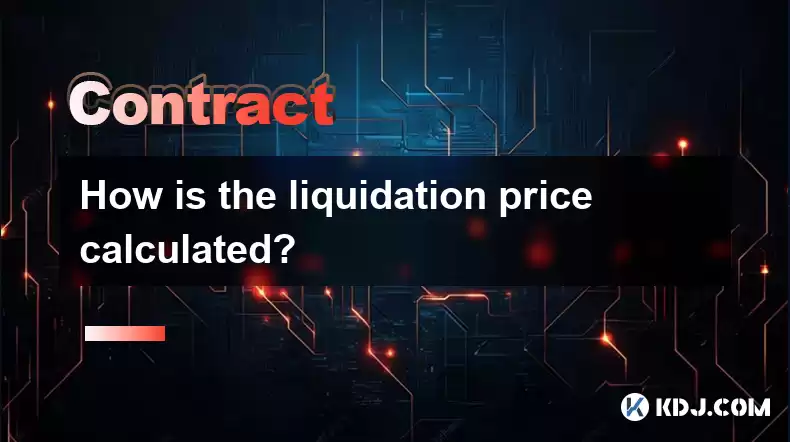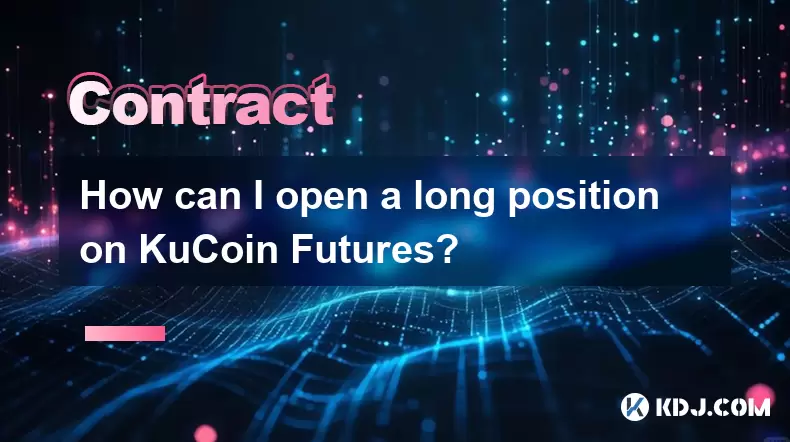-
 Bitcoin
Bitcoin $116700
0.24% -
 Ethereum
Ethereum $3973
4.34% -
 XRP
XRP $3.283
7.68% -
 Tether USDt
Tether USDt $1.000
0.01% -
 BNB
BNB $789.8
2.27% -
 Solana
Solana $176.2
3.31% -
 USDC
USDC $0.9999
0.00% -
 Dogecoin
Dogecoin $0.2238
5.14% -
 TRON
TRON $0.3389
-0.51% -
 Cardano
Cardano $0.7907
4.03% -
 Stellar
Stellar $0.4527
10.02% -
 Hyperliquid
Hyperliquid $41.07
4.27% -
 Sui
Sui $3.794
1.77% -
 Chainlink
Chainlink $19.49
10.40% -
 Bitcoin Cash
Bitcoin Cash $580.9
0.74% -
 Hedera
Hedera $0.2617
4.32% -
 Avalanche
Avalanche $23.41
3.67% -
 Ethena USDe
Ethena USDe $1.001
-0.03% -
 Litecoin
Litecoin $122.4
1.38% -
 Toncoin
Toncoin $3.364
1.49% -
 UNUS SED LEO
UNUS SED LEO $8.988
0.37% -
 Shiba Inu
Shiba Inu $0.00001295
2.82% -
 Uniswap
Uniswap $10.62
5.75% -
 Polkadot
Polkadot $3.922
4.46% -
 Dai
Dai $1.000
0.01% -
 Bitget Token
Bitget Token $4.494
2.15% -
 Monero
Monero $268.0
-1.30% -
 Cronos
Cronos $0.1523
3.68% -
 Pepe
Pepe $0.00001127
4.43% -
 Aave
Aave $285.4
4.85%
How is the liquidation price calculated?
Liquidation price is crucial in crypto trading; it's when an exchange closes a leveraged position to prevent further losses, calculated using initial and maintenance margins.
Apr 12, 2025 at 01:35 am

Introduction to Liquidation Price
Liquidation price is a critical concept in the world of cryptocurrency trading, particularly when dealing with leveraged positions. Understanding how this price is calculated is essential for traders to manage their risk effectively. The liquidation price is the point at which a trader's position is forcibly closed by the exchange to prevent further losses. This article will delve into the detailed mechanics of how the liquidation price is calculated, ensuring that traders have a comprehensive understanding of this vital aspect of trading.
The Basics of Leveraged Trading
Leveraged trading allows traders to open positions larger than their actual capital by borrowing funds from the exchange. This can amplify both potential profits and losses. When a trader uses leverage, they must maintain a certain level of equity in their account, known as the margin. If the market moves against the trader's position and the equity falls below the required margin, the position is liquidated.
Factors Affecting Liquidation Price
Several factors influence the calculation of the liquidation price. These include the initial margin, the maintenance margin, the size of the position, and the direction of the trade. The initial margin is the amount of capital required to open a leveraged position, while the maintenance margin is the minimum amount of equity that must be maintained to keep the position open.
Calculation of Liquidation Price for Long Positions
For a long position, the liquidation price is calculated to ensure that the trader's equity does not fall below the maintenance margin. The formula for calculating the liquidation price for a long position is as follows:
- Liquidation Price = Entry Price / (1 + (Initial Margin / Position Size) - (Maintenance Margin / Position Size))
Let's break down this formula with an example. Suppose a trader opens a long position on Bitcoin with an entry price of $30,000, an initial margin of $3,000, and a maintenance margin of $1,500. If the position size is 1 Bitcoin, the liquidation price would be calculated as:
- Liquidation Price = 30,000 / (1 + (3,000 / 1) - (1,500 / 1))
- Liquidation Price = 30,000 / (1 + 3,000 - 1,500)
- Liquidation Price = 30,000 / 2.5
- Liquidation Price = $12,000
In this example, if the price of Bitcoin falls to $12,000, the trader's position would be liquidated.
Calculation of Liquidation Price for Short Positions
For a short position, the liquidation price is calculated differently. The formula for calculating the liquidation price for a short position is as follows:
- Liquidation Price = Entry Price / (1 - (Initial Margin / Position Size) + (Maintenance Margin / Position Size))
Using the same example as above, but for a short position, let's calculate the liquidation price. Suppose a trader opens a short position on Bitcoin with an entry price of $30,000, an initial margin of $3,000, and a maintenance margin of $1,500. If the position size is 1 Bitcoin, the liquidation price would be calculated as:
- Liquidation Price = 30,000 / (1 - (3,000 / 1) + (1,500 / 1))
- Liquidation Price = 30,000 / (1 - 3,000 + 1,500)
- Liquidation Price = 30,000 / (-0.5)
- Liquidation Price = -$60,000
Since negative prices are not possible in this context, the liquidation price for a short position would be the point at which the price rises to a level that triggers the liquidation. In this case, if the price of Bitcoin rises to $60,000, the trader's position would be liquidated.
Practical Example of Liquidation Price Calculation
To further illustrate how liquidation prices are calculated, let's consider a practical example using a trading platform. Suppose a trader wants to open a leveraged position on Ethereum (ETH) using a trading platform that offers 10x leverage.
- Entry Price: $2,000
- Position Size: 1 ETH
- Initial Margin: $200 (10% of the position value)
- Maintenance Margin: $100 (5% of the position value)
For a long position:
- Liquidation Price = 2,000 / (1 + (200 / 1) - (100 / 1))
- Liquidation Price = 2,000 / (1 + 200 - 100)
- Liquidation Price = 2,000 / 2
- Liquidation Price = $1,000
For a short position:
- Liquidation Price = 2,000 / (1 - (200 / 1) + (100 / 1))
- Liquidation Price = 2,000 / (1 - 200 + 100)
- Liquidation Price = 2,000 / (-99)
- Liquidation Price = -$20.20
Again, since negative prices are not possible, the liquidation price for a short position would be the point at which the price rises to a level that triggers the liquidation. In this case, if the price of Ethereum rises to $20.20, the trader's position would be liquidated.
Importance of Monitoring Liquidation Price
Understanding and monitoring the liquidation price is crucial for traders to manage their risk effectively. By knowing the liquidation price, traders can set stop-loss orders to close their positions before reaching the liquidation point, thereby minimizing potential losses. Additionally, traders can adjust their position sizes and leverage levels to ensure that their liquidation prices are at acceptable levels.
Frequently Asked Questions
Q: Can the liquidation price change after opening a position?
A: Yes, the liquidation price can change if the trader adjusts their position size, adds or removes margin, or if the exchange changes its margin requirements. It's important for traders to regularly check their liquidation prices to stay informed about their risk levels.
Q: What happens if the market price briefly touches the liquidation price but then recovers?
A: If the market price touches the liquidation price, the position will be liquidated immediately. There is no recovery period, so traders must be vigilant about their liquidation prices and use appropriate risk management strategies.
Q: Are there any strategies to avoid liquidation?
A: Yes, several strategies can help avoid liquidation. These include using stop-loss orders, reducing leverage, increasing margin, and diversifying positions. Each strategy has its own set of considerations and potential impacts on overall trading performance.
Q: How do different exchanges calculate liquidation prices?
A: Different exchanges may have slightly different formulas for calculating liquidation prices, but the core principles remain the same. Traders should familiarize themselves with the specific rules and formulas used by their chosen exchange to ensure accurate risk management.
Disclaimer:info@kdj.com
The information provided is not trading advice. kdj.com does not assume any responsibility for any investments made based on the information provided in this article. Cryptocurrencies are highly volatile and it is highly recommended that you invest with caution after thorough research!
If you believe that the content used on this website infringes your copyright, please contact us immediately (info@kdj.com) and we will delete it promptly.
- Roman Storm, Funding Effort, and the Looming Defense Retrial: A New York Minute on the Tornado Cash Case
- 2025-08-09 02:50:14
- Crypto's Wild Ride: XRP, Dogecoin, and the Altcoin Surge You Can't Ignore
- 2025-08-09 02:50:14
- Elon Musk, Bitcoin, and the Enduring Power of Approval: A Crypto Love Story?
- 2025-08-09 03:50:15
- Ruvi AI: The Next Big Thing After Ripple on CoinMarketCap?
- 2025-08-09 03:50:15
- Floki Price Surges: Elliott Wave and Fibonacci Setups Point to Potential Gains!
- 2025-08-09 02:30:16
- Pepe Price, RTX (Remittix?) & the $10K ETH Dream: NYC Crypto Chatter
- 2025-08-09 02:30:16
Related knowledge

What is the difference between realized and unrealized PNL on KuCoin?
Aug 09,2025 at 01:49am
Understanding Realized and Unrealized PNL on KuCoinWhen trading on KuCoin, especially in futures and perpetual contracts, understanding the distinctio...

How does KuCoin Futures compare against Binance Futures in terms of features?
Aug 09,2025 at 03:22am
Trading Interface and User ExperienceThe trading interface is a critical component when comparing KuCoin Futures and Binance Futures, as it directly i...

What is the distinction between mark price and last price on KuCoin?
Aug 08,2025 at 01:58pm
Understanding the Basics of Price in Cryptocurrency TradingIn cryptocurrency exchanges like KuCoin, two key price indicators frequently appear on trad...

What are the specific maker and taker fees on KuCoin Futures?
Aug 08,2025 at 08:28am
Understanding Maker and Taker Fees on KuCoin FuturesWhen trading on KuCoin Futures, users encounter two primary types of fees: maker fees and taker fe...

Can you explain the difference between cross margin and isolated margin on KuCoin?
Aug 09,2025 at 02:57am
Understanding Margin Trading on KuCoinMargin trading on KuCoin allows traders to borrow funds to increase their trading position beyond their actual c...

How can I open a long position on KuCoin Futures?
Aug 09,2025 at 02:07am
Understanding KuCoin Futures and Long PositionsOpening a long position on KuCoin Futures means you are speculating that the price of a cryptocurrency ...

What is the difference between realized and unrealized PNL on KuCoin?
Aug 09,2025 at 01:49am
Understanding Realized and Unrealized PNL on KuCoinWhen trading on KuCoin, especially in futures and perpetual contracts, understanding the distinctio...

How does KuCoin Futures compare against Binance Futures in terms of features?
Aug 09,2025 at 03:22am
Trading Interface and User ExperienceThe trading interface is a critical component when comparing KuCoin Futures and Binance Futures, as it directly i...

What is the distinction between mark price and last price on KuCoin?
Aug 08,2025 at 01:58pm
Understanding the Basics of Price in Cryptocurrency TradingIn cryptocurrency exchanges like KuCoin, two key price indicators frequently appear on trad...

What are the specific maker and taker fees on KuCoin Futures?
Aug 08,2025 at 08:28am
Understanding Maker and Taker Fees on KuCoin FuturesWhen trading on KuCoin Futures, users encounter two primary types of fees: maker fees and taker fe...

Can you explain the difference between cross margin and isolated margin on KuCoin?
Aug 09,2025 at 02:57am
Understanding Margin Trading on KuCoinMargin trading on KuCoin allows traders to borrow funds to increase their trading position beyond their actual c...

How can I open a long position on KuCoin Futures?
Aug 09,2025 at 02:07am
Understanding KuCoin Futures and Long PositionsOpening a long position on KuCoin Futures means you are speculating that the price of a cryptocurrency ...
See all articles

























































































